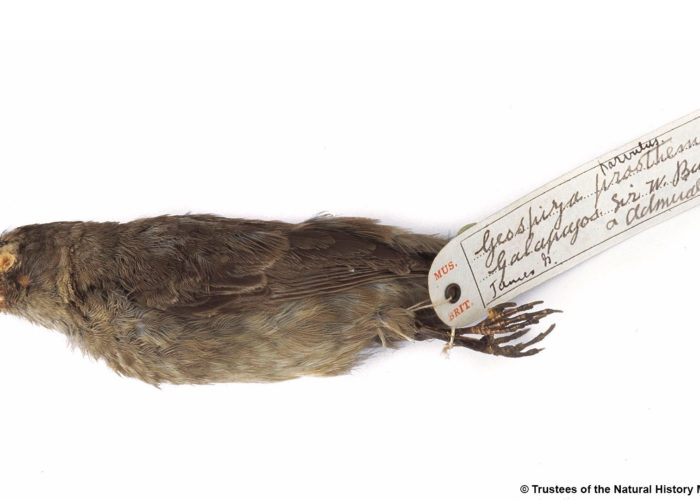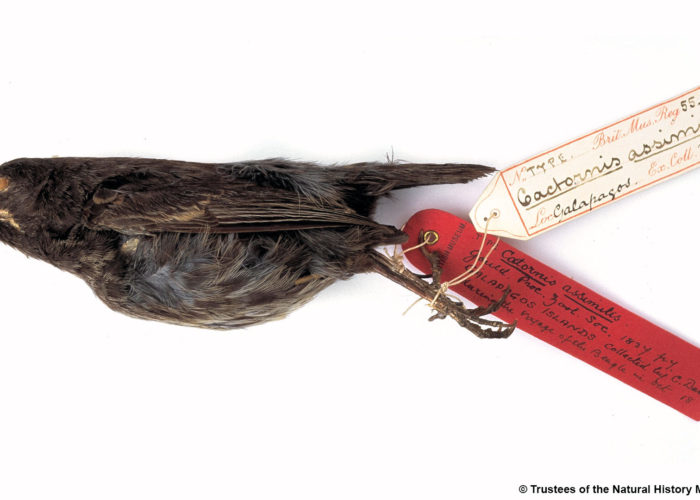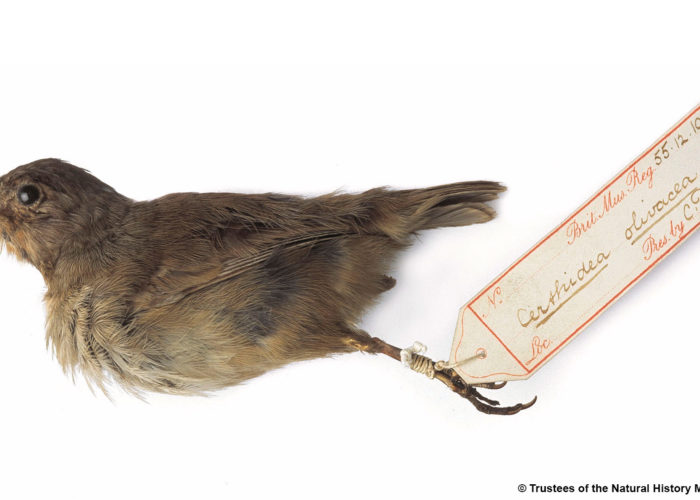Darwin’s Finches
Theme: Economic and technological revolution, Medicine, science and the people

 Image © Trustees of the Natural History Museum, London
Image © Trustees of the Natural History Museum, London
 Image © Trustees of the Natural History Museum, London
Image © Trustees of the Natural History Museum, London
 Image © Trustees of the Natural History Museum, London
Image © Trustees of the Natural History Museum, London
 Image © Trustees of the Natural History Museum, London
Image © Trustees of the Natural History Museum, London
 Image © Trustees of the Natural History Museum, London
Image © Trustees of the Natural History Museum, London
 Image © Trustees of the Natural History Museum, London
Image © Trustees of the Natural History Museum, London
The theory of evolution by natural selection, proposed by Charles Darwin and Alfred Russel Wallace, transformed the way we understand the natural world. Through careful observations, made over many years, they each realised that animals and plants that are particularly well suited to their environment are the most likely to survive, and so pass these characteristics on to the next generation. Gradually, over many generations, these characteristics – such as long necks, warm fur, being able to see well in the dark etc – become more common in a population, and a species changes over time.
In 1831, Charles Darwin (1809-1882) – who had been fascinated by the natural world from a young age, embarked on his now famous voyage aboard HMS Beagle, captained by meteorologist Robert Fitzroy. Over the five-year voyage, he made detailed notes and collected fossils, plants and animals, including these finches from the Galápagos Islands (off the coast of Ecuador).
He realised the finches were all closely related to each other but, over many generations, they had evolved to adapt to different environments. In particular, there were differences in the shape and size of their beaks, which had adapted depending on the types of food available. Some had stout beaks for eating seeds, others were more suitable for eating insects or fruit.
Darwin spent many years conducting further studies and gathering evidence to support his ideas. When he was ready to publish, he learned that a young naturalist, Alfred Wallace (1823 – 1913) had been doing similar work and developed similar ideas. In 1858, they agreed to make a joint announcement on their theory of evolution by natural selection.
A year later, Darwin published On the Origin of Species – one of the most famous scientific texts of all time.
Did you know..?
On the Origin of Species provoked outrage and controversy in some religious circles, as the theory contradicted the belief in divine creation. Despite this it quickly became a bestseller.
Use our Classroom resources to investigate this object, and the theme of Science, Medicine and the people further.
Highlights:
- Using objects, artworks and other sources to find out about the past
- Introducing the Age of Revolution
- How to explore adaptation and evolution using Scratch
And much more…
Try this activity from the Natural History Museum
Sources & acknowledgements
This object description and its related educational resources were researched and written by our team of historians and education specialists. For further information see the item’s home museum, gallery or archive, listed above.
- Related resources
-
Did you know..?
On the Origin of Species provoked outrage and controversy in some religious circles, as the theory contradicted the belief in divine creation. Despite this it quickly became a bestseller.
-
Education overview
You can access a range of teachers resources related to this object and more on our education page.
Please also see our glossary of terms for more detailed explanations of the terms used.
-
Curatorial info
- Originating Museum: Natural History Museum
- Production Date: 1835
- Original record
-
Use this image
Image © Trustees of the Natural History Museum, London
- Rights Holder: Natural History Museum
- License Type: All Rights Reserved








